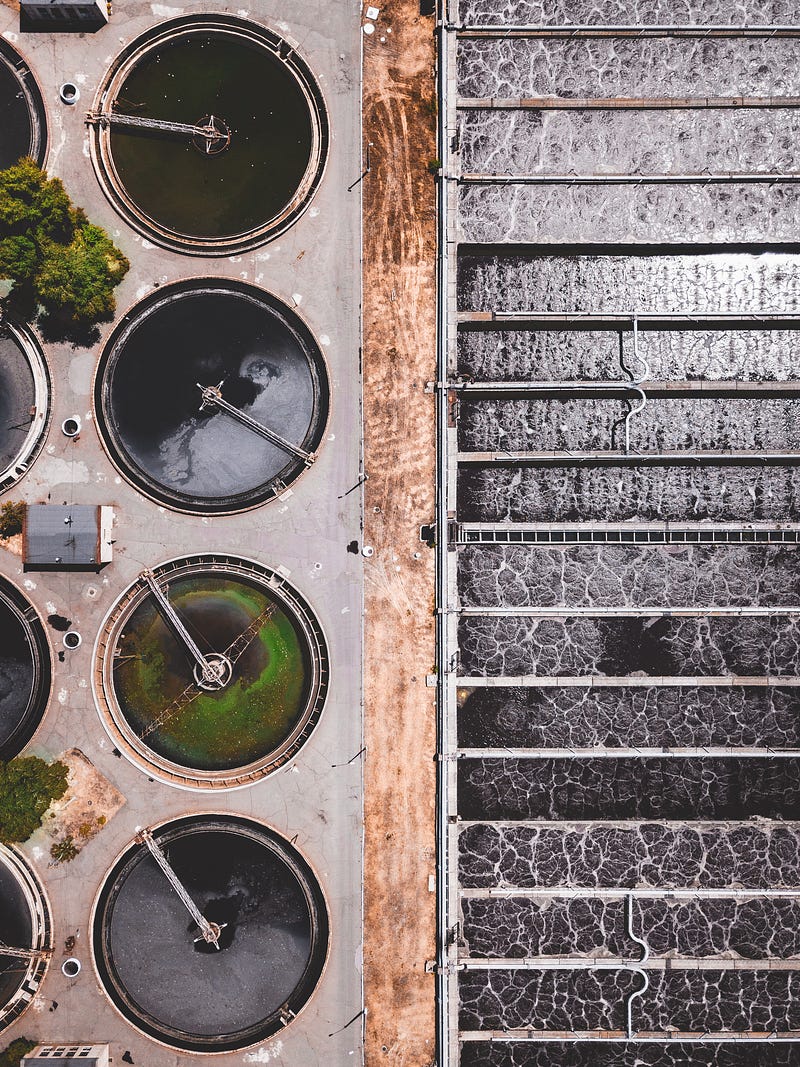Innovative Approaches: Harnessing Dairy Wastewater for Electricity
Written on
Chapter 1: The Dairy Industry's Environmental Challenge
India stands as one of the largest milk producers globally, with an annual output nearing 100 million tonnes. The processing of this raw milk results in various consumer products, including milk, butter, cheese, yogurt, condensed milk, milk powder, and ice cream. By-products such as buttermilk and whey are also generated.
However, the dairy sector produces substantial wastewater—over double the volume of milk processed. This effluent poses environmental risks due to its nutrient-rich composition, which fosters bacterial growth.
Could this wastewater be repurposed for electricity generation using microbial fuel cells? To explore this possibility, Biswanath Bhunia and his team from NIT, Agartala, embarked on a research project.
Section 1.1: The Experimental Setup
The team designed a microbial fuel cell consisting of an acrylic chamber with a 200-milliliter capacity. This setup featured a carbon anode, a platinum/carbon cathode, and a membrane separator, all connected by stainless steel wiring.
In their initial trials, the researchers created a simulated dairy effluent by dissolving two grams of milk powder in one liter of distilled water. Nutrients and trace elements essential for microbial growth, along with alkalinity maintenance, were added to the mixture.
Escherichia coli was selected as the microorganism for the fuel cells. The bacteria were introduced into the anode chamber, which was kept anaerobic, while the cathode chamber remained exposed to air.
Subsection 1.1.1: Voltage Stability Challenges

A significant challenge in microbial fuel cells is voltage overshoot. To tackle this, the team utilized a fed-batch reactor to stabilize voltage generation.
Section 1.2: Real Dairy Wastewater Analysis
The researchers then collected actual dairy wastewater from a local milk producer in Agartala. The chemical oxygen demand (COD) of this wastewater was measured at over 8000 milligrams per liter. To determine optimal conditions, they diluted the wastewater to achieve COD levels between 500 and 2000 milligrams per liter. They discovered that a concentration of 1000 milligrams per liter yielded the most stable power output.
Chapter 2: Experimentation and Results
The experiment lasted six days. Initially, the open-circuit voltage rose steadily, peaking at 0.661 volts after approximately 36 hours, which is nearly half the voltage of a typical dry battery (1.5 volts). Over time, the milk powder concentration decreased, leading to an acidic pH shift and a subsequent voltage drop to 0.550 volts.
To counteract this, the team introduced 50 milliliters of a higher concentration simulated dairy solution with a pH of 9 to enhance E. coli growth. This adjustment resulted in exponential microbial growth and an increase in current generation.
Description: This video discusses bioenergy production techniques using microbial fuel cell technologies, highlighting the role of innovative solutions in sustainability.
After the first feed, the voltage surged within three hours, reaching a high of 664 millivolts after 80 hours. A second feeding with real dairy wastewater occurred five days later, resulting in an open-circuit voltage exceeding 650 millivolts. The microbial fuel cell achieved an impressive current density of 3.60 amperes per square meter.
The researchers are optimistic about scaling these microbial fuel cells for industrial applications. Wastewater treatment can be costly, but generating electricity from this process could offset those expenses.
Description: This video explores how microbial fuel cells can electrify wastewater treatment processes, showcasing the innovative use of waste for energy production.
Reference: Fuel, 266: 117073 (2020); DOI: 10.1016/j.fuel.2020.117073
Thanks to Madhu K P